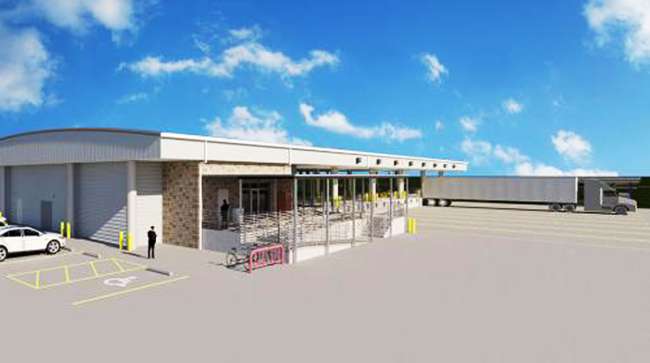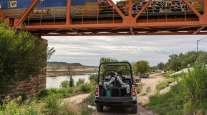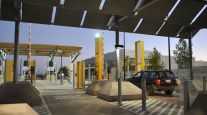Staff Reporter
Work Begins to Expand Key Texas-Mexico Entry for Trucks

[Stay on top of transportation news: Get TTNews in your inbox.]
Construction at a Texas-Mexico border crossing has begun on a new commercial inspection and processing facility to make it easier and faster for truckers to bring freight through Anzalduas Port of Entry.
After expected completion in 11 months, the Anzalduas International Bridge and U.S.-Mexico land entry port will fully support commercial cargo. Currently, it only receives empty cargo trucks traveling southbound.
New operational facilities there will relieve congestion and pressure at the only commercial bridge (the Pharr-Reynosa International Bridge) in the Hidalgo region with Mexico, where an average of 9,300 commercial trucks per week experience long lines waiting some 100 minutes to pass through during peak traffic times.
Currently at the Anzalduas land entry port, from 2,500 to 5,000 commercial vehicles daily pass through the 14-year-old bridge, which is located on the U.S. side near 250 manufacturing enterprises. On the Mexican side is a 775-acre foreign trade zone with 150 factories manufacturing cellphone parts, home appliances, medical equipment and electronics components needed in U.S. products.
“With the continued increase of imports from Mexico, having these additional spaces and improvements will have a significant positive impact on our ability to expedite the processing time and get shipments on their way into U.S. commerce,” Carlos Rodriguez, director of the Hidalgo/Pharr/Anzalduas Port of Entry, said recently.
The project will create needed infrastructure improvements and provide facilities to enable processing of trucks fully laden traveling in both directions on the bridge.
New southbound facilities will be located on the west side of the bridge’s land port of entry. Work includes upgrading an empty commercial inspection area and completing access roads, a primary outbound inspection booth, eight commercial secondary inspection bays, exits and a control booth. It also will have an export/cargo processing office.
The northbound side, to be relocated on the east side of the land port of entry, will feature Unified Cargo Processing technology to help U.S. and Mexican customs officers inspect incoming cargo and expedite its clearance. Advanced pre-primary nonintrusive inspection technology will be deployed. The area will have 30 secondary inspection bays, cargo processing and administrative offices, an operations command center, a Free and Secure Trade (FAST) lane dedicated for the Customs-Trade Partnership Against Terrorism, a hazmat facility and a U.S. Department of Transportation inspection facility.
Participants in the project are the General Services Administration, U.S. Customs and Border Protection and the Anzalduas International Bridge Board.
The project is being funded with a $25 million DOT infrastructure grant, a $22 million grant from the Texas Department of Transportation and a $63 million loan to the Texas city of McAllen. The city received the loan from the North American Development Bank, a financial institution from U.S. and Mexican governments that provides financial support on infrastructure projects benefiting people from both countries.
Want more news? Listen to today's daily briefing above or go here for more info
“The city of McAllen and the Anzalduas International Bridge Board remain committed to working with our federal partners to identify and implement innovative methods to expedite traffic and trade at our international port of entry, making border crossings and inspections function more effectively while helping our trade partners process and cross their goods more efficiently,” said Javier Villalobos, mayor of McAllen and chair of the Anzalduas International Bridge Board.
Last June, the bridge board helped complete a lane expansion project at the Anzalduas land port of entry. The project involved pavement improvements with a 45-foot taper dedicated for a through lane and restriping the road to help decrease wait times there.




